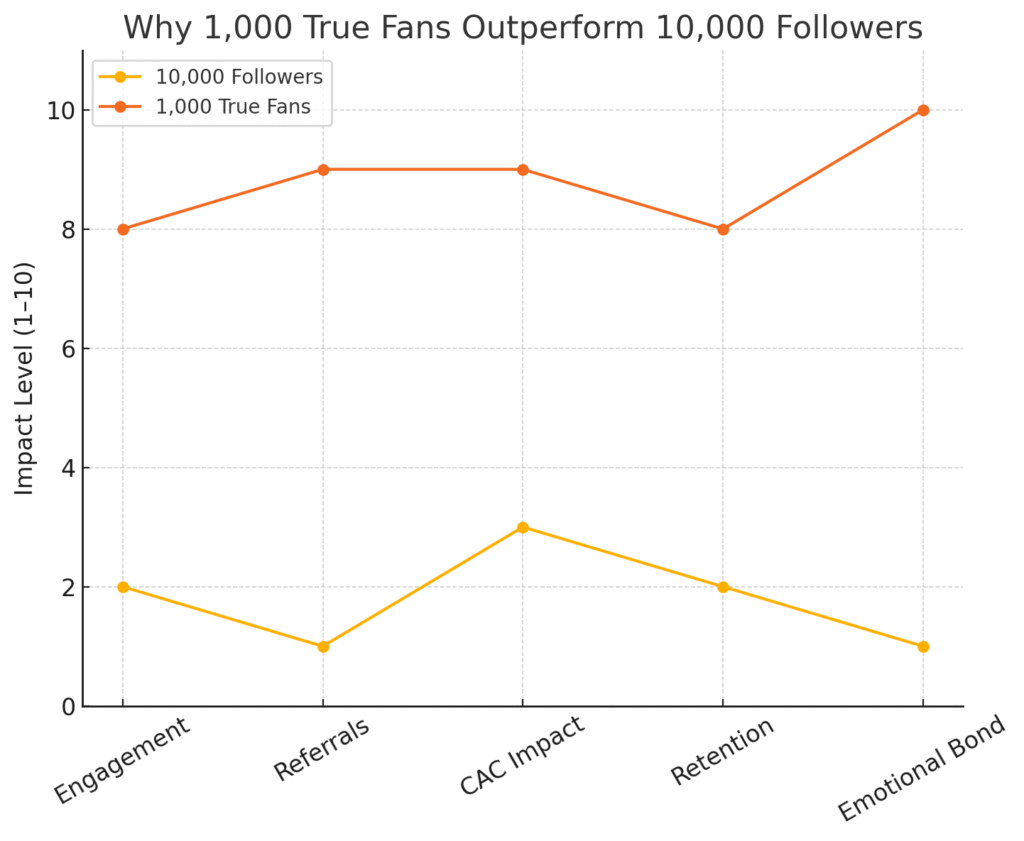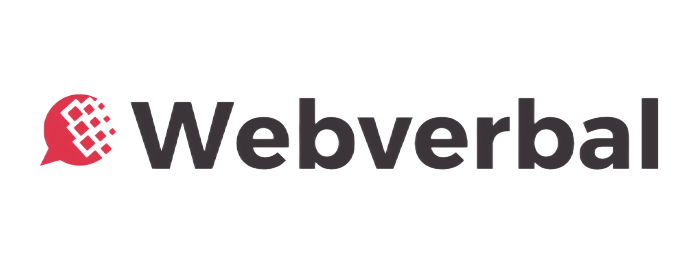Table Of Content
- Why Your First 1,000 Fans Define Your Startup’s Destiny
- What Does “Community” Mean for a Startup?
- Followers vs Fans vs Community
- Why Community-First Thinking Matters in India
- Why the First 1,000 Fans Matter More Than 10,000 Followers
- Vanity Metrics vs Meaningful Growth
- Fans Create Flywheels
- Blueprint to Go from Zero to 1,000 Fans
- Step 1: Define Your “Why” and Craft Your Story
- Step 2: Identify Your Early Adopters
- Step 3: Storytelling + Digital Pitch Decks
- Step 4: Build Engagement Loops
- Step 5: Hybrid Channels (Online + Offline)
- Step 6: Measure Trust, Not Just Numbers
- Case Studies
- Case 1 – Indian Grassroots Startup
- Case 2 – Global Example: Notion
- ROI of Community in Numbers
- Founder Mindset Shifts
- Tools, Platforms & Hacks
- Free/Low-Cost Tools
- Hacks to Accelerate Growth
- Fans vs Followers (Visual Table)
- Conclusion: A Founder’s Message
- FAQs
Why Your First 1,000 Fans Define Your Startup’s Destiny
Every startup dreams of millions of users, but in the real world, the first 1,000 true fans matter more than the next 100,000.
Kevin Kelly, in his seminal essay 1,000 True Fans (source), argued that a creator doesn’t need millions—just 1,000 people who love what you do, buy everything you produce, and spread your story. In the startup world, this idea is not just poetic—it’s practical survival.
As a founder and later as a Mentor for Change with NITI Aayog, I’ve seen this principle play out across rural villages, Tier-2 towns, and urban accelerators. Startups that cultivate a loyal circle of believers early on survive longer, pivot smarter, and grow more sustainably than those chasing vanity metrics.
This article is your blueprint to go from zero to 1,000 fans—with data, case studies, and step-by-step tactics. Think of it as a founder-to-founder guide to building not just users, but a community that carries you through storms.
What Does “Community” Mean for a Startup?
Followers vs Fans vs Community
- Followers: People who casually see your updates.
- Customers: People who buy once or twice.
- Fans: People who believe in you, advocate for you, and show up repeatedly.
Your startup’s community is a trust-based group where fans don’t just consume—they participate, co-create, and defend your vision.
Why Community-First Thinking Matters in India
In Bharat, communities have always driven resilience—farmers’ cooperatives, handloom clusters, and self-help groups. Startups can harness this cultural DNA.
When I mentored a rural innovator in Odisha, he told me:
“I don’t have investors, but my community of 300 farmers is my capital. They test my products, give feedback, and bring new members.”
That is community-first entrepreneurship in action, deeply rooted in India’s grassroots traditions.
For context, compare this with a Bangalore-based SaaS founder I worked with. His first 1,000 fans were not customers buying licenses—they were product managers on Slack groups who beta-tested features and spread word-of-mouth. Different geographies, but the same principle: early believers become growth engines.
Why the First 1,000 Fans Matter More Than 10,000 Followers

Vanity Metrics vs Meaningful Growth
Vanity metrics—follower counts, likes, downloads—are seductive but shallow. They rarely convert into retention or revenue.
A McKinsey study found that companies focusing on deep engagement over broad reach saw 20–30% higher retention (McKinsey, 2022).
Fans Create Flywheels
- Lower CAC (Customer Acquisition Cost):
Word-of-mouth reduces acquisition costs dramatically. Studies show referrals convert 30% better than paid ads. - Higher Retention:
Bain & Company found that increasing retention rates by 5% boosts profits by 25–95% (New Frontier Funding). - Founder Resilience:
A loyal community provides moral strength—critical when startups face inevitable lows.
Blueprint to Go from Zero to 1,000 Fans
Step 1: Define Your “Why” and Craft Your Story
Your “why” is your gravity. Fans rally around stories, not features.
Use Simon Sinek’s Golden Circle framework: Start with WHY → HOW → WHAT.
- Instead of “We sell organic tea,” say:
“We exist to bring dignity back to small tea farmers while giving consumers authentic flavor.”
Step 2: Identify Your Early Adopters
Look for people with acute pain points that your solution addresses.
Channels: colleges, WhatsApp groups, local markets, niche forums.
Example: A Tier-2 EdTech founder got her first 500 users by running free Sunday workshops in community halls—then converting attendees into beta users.
Step 3: Storytelling + Digital Pitch Decks
Every founder should create two decks:
- Investor Deck (capital)
- Community Deck (trust)
Your community deck explains:
- Who you are
- Why this matters
- How they can join the journey
Step 4: Build Engagement Loops
Create cycles: Share → Get Feedback → Co-Create → Reward → Share again.
Example:
- Early users suggest new features
- You implement and credit them publicly
- They feel ownership and invite others
Step 5: Hybrid Channels (Online + Offline)
- Online: WhatsApp, Telegram, Discord, LinkedIn groups
- Offline: Local meetups, chai circles, rural haats
Case in point: A Jharkhand health-tech founder grew from zero to 900 fans in 10 months by running health camps + WhatsApp support groups.
Step 6: Measure Trust, Not Just Numbers
Metrics that matter:
- Repeat participation
- % of fans who refer others
- Depth of conversations (not just likes)
- Retention after 3, 6, 12 months
Case Studies
Case 1 – Indian Grassroots Startup
A Bhubaneswar-based handloom founder launched with just 50 WhatsApp customers. By telling weavers’ stories and spotlighting saree craftsmanship, she built a fan base of 1,200 in 14 months, with 35% repeat purchases.
Case 2 – Global Example: Notion
Notion’s first 1,000 fans were evangelists who wrote guides, templates, and communities. Today, their growth is powered less by ads and more by community-created value (The New Yorker).
ROI of Community in Numbers
- Average CAC (Customer Acquisition Cost):
- B2C eCommerce: ~$68
- SaaS: ~$166
- Community-led CAC: Often 40–60% lower due to referrals.
- Retention Impact: Community-led startups achieve 3x higher retention compared to ad-driven ones.
- Revenue per Fan:
If 1,000 fans each spend ₹500/month, that’s ₹6 crore annually—without ads.
Founder Mindset Shifts
- Shift 1: From Acquisition to Belonging
Stop chasing volume. Instead, nurture depth. - Shift 2: From Broadcasting to Listening
Fans emerge when they feel heard. - Shift 3: From Product to People
Community-first founders design with fans, not just for fans.
Tools, Platforms & Hacks
Free/Low-Cost Tools
- WhatsApp / Telegram for grassroots
- Discord for digital-native fans
- Google Forms for surveys
- Notion / Trello for collaborative projects
Hacks to Accelerate Growth
- Micro-events: Invite 10 people, not 1,000.
- Referral loops: Reward introductions with recognition.
- Personal touch: Founders DM 100 people manually.
Fans vs Followers (Visual Table)
| Aspect | Followers (10,000) | True Fans (1,000) |
|---|---|---|
| Engagement | Low (passive) | High (active) |
| Referrals | Rare | Frequent |
| CAC Impact | Neutral | Lower CAC |
| Retention | Weak | Strong |
| Emotional Bond | None | Deep |
Conclusion: A Founder’s Message
Dear fellow founders,
Your startup doesn’t need millions to start. It needs 1,000 true believers—fans who trust you, walk with you, and defend you.
This is the essence of startup community building: creating belonging, not broadcasting.
So here’s my 90-day challenge: Don’t chase 10,000 impressions. Focus on your first 100 fans who truly care. Scale that to 1,000—and watch your foundation solidify.
FAQs
Startup community building is the process of creating a loyal group of early fans who believe in your vision, engage deeply, and help your startup grow through trust and referrals.
The first 1,000 fans provide stability, feedback, and word-of-mouth growth. They reduce customer acquisition costs and boost long-term retention.
Most startups take 6–18 months to reach 1,000 true fans, depending on focus, storytelling, and consistency.
Yes. Many founders grow early communities through storytelling, referrals, and local events—often without large marketing budgets.
Followers passively consume content, while fans actively support, advocate, and co-create with the startup. Fans are the backbone of sustainable growth.




